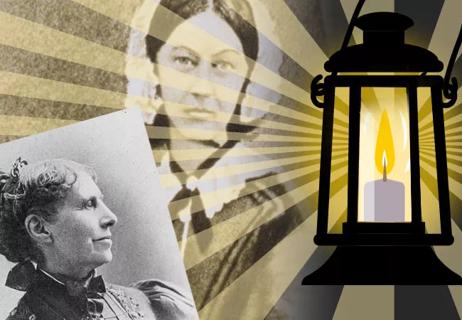Medina Hospital earns Pathway to Excellence designation

By Kelly Hancock, MSN, RN, NE-BC
Cleveland Clinic is a non-profit academic medical center. Advertising on our site helps support our mission. We do not endorse non-Cleveland Clinic products or services. Policy
Just weeks ago, Cleveland Clinic Nursing received confirmation that Cleveland Clinic Medina Hospital earned the prestigious Pathway to Excellence® recognition from the American Nurses Credentialing Center (ANCC), a subsidiary of the American Nurses Association.
To achieve the designation, Medina Hospital met stringent nursing practice standards related to workplace safety and health, achievement recognition, professional development and more. Medina Hospital is a 157-bed acute-care facility that has served the healthcare needs of Ohio’s Medina County since 1944. It became part of Cleveland Clinic health system in 2009.
Not only does earning the national Pathway to Excellence designation solidify that Medina Hospital touts an ideal nursing practice environment in which nurses can excel, it also signifies a very special achievement within Cleveland Clinic’s Nursing organization.
With Medina Hospital’s recognition, all of Cleveland Clinic’s U.S.-based hospitals have now earned designation of either ANCC’s Pathway to Excellence® or Magnet Recognition Program®. These two recognitions are the most highly coveted in the nursing profession and Cleveland Clinic is extremely proud to recognize our nurses, nursing staff and nurse leaders for continuously striving for nursing excellence.
Cleveland Clinic’s Magnet® Designated Hospitals
Cleveland Clinic’s Pathway to Excellence® Designated Hospitals
Achieving ANCC recognition throughout our health system has been a long-time goal of our organization. Throughout the years, we’ve implemented and embraced change, pursued boundaries we never before ventured near, and diligently pushed our organization to be better and stronger in all realms of professional nursing practice.
As other nurse leaders in multi-facility health systems can attest, having a cohesive nursing organization within a health system is no small feat. One of the most notable challenges I’ve experienced within our 12,000-member nursing team is ensuring we operate as one unified organization with a consistent brand and culture, while allowing each facility to keep its local personality.
The ANCC’s Pathway to Excellence and Magnet programs are hospital-specific recognitions that display the hard-work, commitment and dedication each hospital has. Further, these achievements exemplify the importance of unity, progression and innovation at the local level and how local success contributes to the greater good of a health system.
Throughout our collective journey to systemwide ANCC recognition status, our nurses have contributed endlessly to process improvements, evidence-based practice enhancements, new nursing innovations and more. Below is a quick selection of some of the recent work produced at a local level that is returning both local and systemwide benefit.
Four nurses at Cleveland Clinic Hillcrest Hospital, all members of the Magnet Steering Committee, have been leading a project to improve quality outcomes by providing access to key metrics and educating clinical nurses on how to use them. Nearly three years later, Hillcrest has seen improvement in all eight metrics it selected to track hospital-wide and at the unit level. Read more.
In 2014, Cleveland Clinic Nursing’s Operating Room Affinity Group – a team of nursing directors that create best practices for the OR – set out to update and streamline the health system’s preference cards. The cards are designed to assist nurses with the setup of instruments and supplies and provide data to track costs and patient charges. Today, the team is meeting goals for standardization, the ability for nurses to float to other hospitals comfortably, and financial savings. Read more.
After 2012 statistics revealed that of Medina Hospital’s 250 nurses, only 6 percent were enrolled in an RN-to-BSN program and 6 percent in an MSN program, and only 47 nurses had advanced a level on the Nursing Institute’s Career Ladder and only 49 nurses were certified, the hospital’s Professional Development Council decided to ramp up promotions of professional development activities. Its goal was to boost participation in the Career Ladder program, promote continuous learning and recognize nursing accomplishments. In two years, professional development statistics more than doubled and are continuing to rise. Read more.
For Cleveland Clinic, it’s been clear that the goals and standards set forth by ANCC’s Pathway to Excellence and Magnet programs have a true and meaningful impact in everyday practice. I encourage any hospital pursuing these recognitions to have dedicated teams or steering committees in place. You will be surprised at the level of excellence that can be attained and sustained as you conquer your own ANCC recognition journey.
For more tips and advice on how to ‘live the gold standard for nursing excellence,’ read my recent post on a selection of best practices for implementing a Magnet-centered culture within your hospital or health system.
Kelly Hancock is the Executive Chief Nursing Officer of the Cleveland Clinic Health System, and Chief Nursing Officer of Cleveland Clinic Main Campus.

By listening closely and responding authentically, leaders can create an environment where nurses feel valued

Communication and self-reflection key to world-class patient care

Nurse leaders play a pivotal role in employee engagement, quality, safety – and, yes, patient care

Text highlights historic contributions to research, education and clinical care

Insights and advice from a nursing leader

Find balance, slow down, seek feedback and more

A new age in practice, physician partnerships and more

Insight on heart failure awareness and the work of HFSA